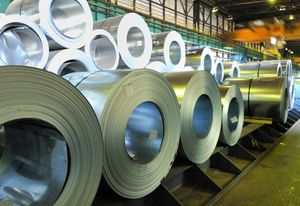
The global stock market is experiencing a robust bull run in late 2025, with major indices reaching new peaks, largely propelled by the extraordinary performance of the semiconductor industry. Chipmakers, at the forefront of the Artificial Intelligence (AI) revolution, have emerged as the undeniable stars of this rally, driving significant gains and reshaping market valuations. This surge underscores a profound technological shift, positioning AI as a critical economic engine and the semiconductor sector as its indispensable backbone.
This current market dynamism reflects a potent combination of strong corporate earnings, an accommodative interest rate environment, and demographic tailwinds. However, the standout narrative remains the insatiable demand for advanced processing power, with companies specializing in AI-enabling chips seeing their market capitalizations soar to unprecedented levels. The implications are far-reaching, signaling a sustained period of innovation and investment in high-tech sectors, while also raising questions about market sustainability and potential vulnerabilities.
The AI Tsunami: Unpacking the Semiconductor-Led Rally
The year 2025 has cemented the semiconductor industry's role as a primary driver of global economic growth and market performance. Indices like the S&P 500 and the Nasdaq Composite have seen year-to-date advances of approximately 14% and 18% respectively, with chip stocks frequently outperforming these benchmarks. The Philadelphia Semiconductor Index (SOX) has notably reached new all-time highs, reflecting the sector's exceptional momentum. This growth is underpinned by projections that global chip sales will hit a new record of nearly $700 billion in 2025, with some forecasts even pushing towards $731 billion, marching steadily towards a $1 trillion industry by 2030.
The timeline leading up to this moment is characterized by an escalating demand for AI capabilities, which began gaining significant traction in 2023 and accelerated through 2024. This period saw massive investments in AI research and development, data center expansion, and the deployment of generative AI models across various industries. Key players like NVIDIA Corporation (NASDAQ: NVDA), Advanced Micro Devices Inc. (NASDAQ: AMD), Taiwan Semiconductor Manufacturing Company Ltd. (NYSE: TSM), and Intel Corporation (NASDAQ: INTC) have been central to this narrative, supplying the foundational hardware for this technological transformation. Their strategic foresight and rapid innovation in developing specialized chips—such as Graphics Processing Units (GPUs), Application-Specific Integrated Circuits (ASICs), and High-Bandwidth Memory (HBM)—have directly fueled their stock performance and, by extension, the broader market's upward trajectory.
Initial market reactions have been overwhelmingly positive, with investors pouring capital into companies perceived to be beneficiaries of the AI boom. This enthusiasm is also reflected in the recovery of the memory market, where prices for DRAM and NAND have rebounded, driven by the immense data storage requirements of AI models. Furthermore, government initiatives, such as the U.S. CHIPS and Science Act, have injected substantial private-sector investment into domestic chip manufacturing, signaling a long-term commitment to bolstering the semiconductor supply chain and reinforcing investor confidence in the sector's future growth.
Navigating the AI Landscape: Winners and Potential Challenges
The current AI-driven market surge has created clear winners, primarily among chipmakers and related technology companies. NVIDIA Corporation (NASDAQ: NVDA) stands as the undisputed titan, having solidified its position as the world's most valuable company with a market capitalization reaching an astounding $4.5 trillion by October 2025. Its stock has climbed approximately 39% year-to-date, with AI sales constituting a dominant 88% of its latest quarterly revenue, showcasing its critical role in the AI infrastructure. Taiwan Semiconductor Manufacturing Company Ltd. (NYSE: TSM), as the world's largest dedicated independent semiconductor foundry, has also seen its market capitalization surpass $1 trillion in July 2025, largely due to its pivotal role in manufacturing the advanced chips demanded by AI leaders like NVIDIA.
Other significant beneficiaries include Advanced Micro Devices Inc. (NASDAQ: AMD), which has seen its stock rise by 47% year-to-date, leveraging its competitive offerings in high-performance computing and AI accelerators. Intel Corporation (NASDAQ: INTC), despite facing intense competition, has also experienced a resurgence, with its stock surging around 80% since the beginning of 2025, boosted by strategic investments in foundry services and a renewed focus on AI computing solutions. Companies like Micron Technology Inc. (NASDAQ: MU) (up 33% YTD) and Lam Research Corp. (NASDAQ: LRCX) (up 37% YTD), which are crucial for memory and chip manufacturing equipment respectively, are also thriving due to the increased demand for AI-specific components and manufacturing capabilities.
While the primary beneficiaries are evident, the "losers" are less about outright decline and more about companies that fail to adequately pivot or keep pace with the rapid advancements in AI. Traditional technology firms heavily reliant on non-AI-driven markets, or those slow to integrate AI into their product strategies, may see their market share erode or growth rates lag behind the AI frontrunners. Furthermore, the intense capital expenditure required for cutting-edge chip manufacturing and R&D could strain smaller players or those with less robust financial positions, making it harder to compete in this high-stakes environment.
Broader Implications: Reshaping Industries and Geopolitics
The strong performance of chipmakers within the broader stock market gains in late 2025 is not merely a financial phenomenon; it signifies a profound shift in industrial paradigms and geopolitical dynamics. This event fits squarely into the broader industry trend of digital transformation, but with AI now acting as the primary accelerant. AI is no longer just a feature but the core driver of innovation, efficiency, and market expansion across virtually all sectors, from healthcare and finance to automotive and entertainment. The demand for AI chips is indicative of a foundational re-architecture of global computing infrastructure, moving towards more powerful, specialized, and energy-efficient processing.
The ripple effects on competitors and partners are substantial. Companies that traditionally supplied components for PCs and smartphones are now either retooling for AI applications or finding themselves in a less prominent position. Cloud computing providers, for instance, are becoming increasingly reliant on advanced AI chips to power their services, forming deeper strategic partnerships with chip manufacturers. This also intensifies competition among chip designers and foundries, driving innovation but also demanding massive investment. Regulatory bodies are also taking note, with discussions intensifying around the ethical implications of AI, data privacy, and the potential for market concentration within the AI ecosystem. The U.S. CHIPS Act is a clear example of policy intervention aimed at securing national interests and supply chain resilience in this critical sector.
Historically, periods of significant technological advancement, such as the dot-com boom or the rise of mobile computing, have led to similar market surges and revaluations. However, the current AI wave appears to be more fundamental, impacting a broader array of industries simultaneously. The sheer scale of investment and the transformative potential of AI suggest that its impact could be more enduring and widespread, fundamentally altering economic structures and creating new forms of value. The concentration of advanced chip manufacturing in specific regions, particularly Taiwan, also amplifies geopolitical sensitivities, making supply chain resilience and diversification a strategic imperative for nations worldwide.
The Road Ahead: Sustained Growth or Market Correction?
Looking ahead, the short-term outlook for chipmakers and the broader stock market remains cautiously optimistic. The immediate future is likely to see continued strong demand for AI-specific hardware, driven by ongoing investments in data centers, enterprise AI adoption, and the development of new AI applications. Companies like NVIDIA, AMD, and TSMC are well-positioned to capitalize on this trend, with their product roadmaps and manufacturing capabilities aligned with market needs. However, the rapid ascent of valuations also introduces a degree of market risk. Analysts are closely watching for signs of overheating or potential "circular revenue" dynamics, where a company's investment in its ecosystem might indirectly fuel its own sales.
In the long term, the semiconductor industry is poised for sustained growth, with projections of reaching $1 trillion in revenue by 2030. This growth will be fueled by the pervasive integration of AI into everyday life, the expansion of the Internet of Things (IoT), and the increasing sophistication of autonomous systems. Potential strategic pivots will include further specialization in AI accelerators, advancements in chip packaging technologies, and a relentless focus on energy efficiency. Market opportunities will emerge in areas like edge AI, specialized AI software, and services that leverage advanced computing power. Challenges, however, include managing supply chain complexities, navigating geopolitical tensions, and attracting and retaining top engineering talent.
Potential scenarios range from a continued, albeit more moderated, bull market, to a significant market correction if AI demand slows or if geopolitical events disrupt critical supply chains. Another scenario involves increased competition from new entrants or a more fragmented market as companies develop their own custom AI chips. Investors should watch for innovations in chip architecture, the diversification of manufacturing capabilities, and the regulatory landscape surrounding AI, as these factors will heavily influence the trajectory of the market and the semiconductor industry in the coming years.
Wrapping Up: A New Era of AI-Driven Prosperity
In summary, the late 2025 stock market gains, spearheaded by the stellar performance of chipmakers, represent a pivotal moment in financial history, largely driven by the transformative power of Artificial Intelligence. Key takeaways include the unprecedented demand for AI-specific hardware, the emergence of companies like NVIDIA and TSMC as market behemoths, and the profound ripple effects across industries and geopolitical landscapes. This period marks a fundamental revaluation of technology assets and a clear shift towards an AI-centric global economy.
Moving forward, the market is expected to remain dynamic and innovation-driven. While the current bullish sentiment is strong, investors should remain vigilant regarding market valuations, geopolitical risks, and the sustainability of current growth rates. The semiconductor industry, as the "lifeblood of a global AI economy," will continue to be a critical sector to watch, with its advancements and challenges dictating much of the broader market's direction.
Investors should pay close attention to quarterly earnings reports of leading chipmakers, announcements regarding new AI chip architectures, developments in manufacturing technology, and any shifts in international trade policies or supply chain resilience initiatives in the coming months. The era of AI-driven prosperity is here, but like any technological revolution, it will present both immense opportunities and significant challenges that require careful navigation.
This content is intended for informational purposes only and is not financial advice.





